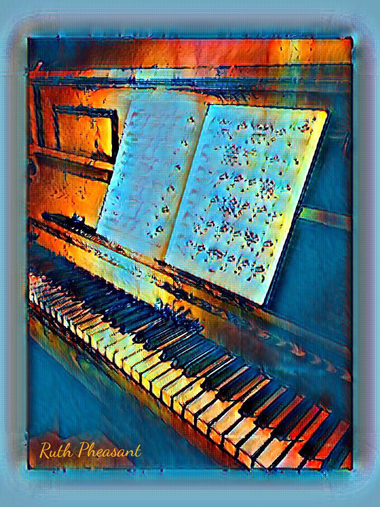
Have a look through the piece you are about to sight read before you start playing. Use this time to observe key signatures, time signatures, any changes of clef, accidentals, dynamics etc.
Work out what key the piece is in by looking at the key signature and any accidentals. See if the starting and finishing notes belong to the tonic triad of the key you have just worked out - if they do, this confirms your findings. Knowing what key the piece is in will make it easier for you to remember which sharps or flats to play, and to use appropriate fingering which you will have learned from practising the corresponding scale. You will also be better able to predict which chords are used if you know what key the piece is in.
Notice melodic and chordal patterns e.g. scale-like passages and broken chord or arpeggio based sequences. See if you can spot any repetition of melodic, harmonic and rhythmic patterns.
Look at rhythmic patterns and imagine how they will sound, or tap them out whilst counting the beat.
Once you start playing, aim to keep your eyes on the music and always read ahead. Frequently glancing at your hands will significantly slow down your playing and reduce your fluency during sight reading. Watching your hands while playing the piano is more appropriate for memorised pieces and technical work.
Keep the rhythm flowing and don't be tempted to correct mistakes during a sight reading test. If you are being assessed on sight reading in an exam you will get more marks for ignoring your mistakes in order to maintain the pulse and rhythm, rather than going back on yourself to correct a note. The aim is to make it sound like a musical performance with good rhythm and expression, rather than sounding like you are practising. Correcting mistakes is important if you are practising and learning a piece or technical exercise, but is not so useful during sight reading.
For more in depth advice about sight reading on the piano, read this article: How to Improve Your Sight Reading on the Piano
Articles main menu
Work out what key the piece is in by looking at the key signature and any accidentals. See if the starting and finishing notes belong to the tonic triad of the key you have just worked out - if they do, this confirms your findings. Knowing what key the piece is in will make it easier for you to remember which sharps or flats to play, and to use appropriate fingering which you will have learned from practising the corresponding scale. You will also be better able to predict which chords are used if you know what key the piece is in.
Notice melodic and chordal patterns e.g. scale-like passages and broken chord or arpeggio based sequences. See if you can spot any repetition of melodic, harmonic and rhythmic patterns.
Look at rhythmic patterns and imagine how they will sound, or tap them out whilst counting the beat.
Once you start playing, aim to keep your eyes on the music and always read ahead. Frequently glancing at your hands will significantly slow down your playing and reduce your fluency during sight reading. Watching your hands while playing the piano is more appropriate for memorised pieces and technical work.
Keep the rhythm flowing and don't be tempted to correct mistakes during a sight reading test. If you are being assessed on sight reading in an exam you will get more marks for ignoring your mistakes in order to maintain the pulse and rhythm, rather than going back on yourself to correct a note. The aim is to make it sound like a musical performance with good rhythm and expression, rather than sounding like you are practising. Correcting mistakes is important if you are practising and learning a piece or technical exercise, but is not so useful during sight reading.
For more in depth advice about sight reading on the piano, read this article: How to Improve Your Sight Reading on the Piano
Articles main menu